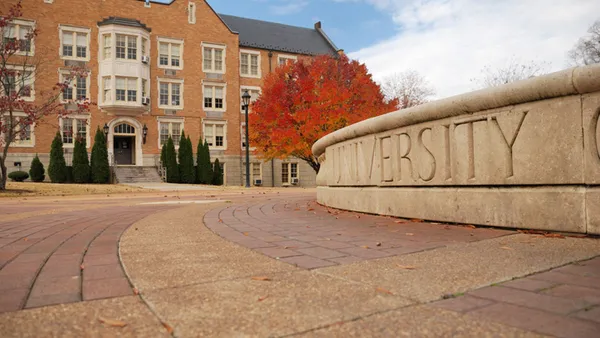Dive Brief:
- Colleges' hourly staff workforce shrank from 2020 to 2021, according to the latest annual data from the College and University Professional Association for Human Resources.
- The overall decreases were bigger among part-time workers, at 17%, than their full-time counterparts, at 3.2%. In 2020, their numbers rose by 16.4% and 4.4%, respectively.
- It's too early to tell whether the losses are permanent, the association wrote in a press release, noting that declines were "understandable" during the pandemic.
Dive Insight:
Only one of four segments tracked — technical/paraprofessional — saw gains from 2020 to 2021, though its growth was smaller than the prior year at 1.3% compared to 3.4%. The service/maintenance sector shrank by the biggest margin, down 4.1%, followed by office/clerical and skilled craft, with decreases of 3.3% and 2%.
The survey, which covers staff members that are typically paid hourly wages rather than salaries, counted more than 198,000 employees across 782 institutions. CUPA-HR collected data from the start of November to mid-January.
The decreases don't necessarily come as a surprise. Surveys early in the pandemic indicated college leaders were thinking of cutting staff. And data tracked by The Chronicle of Higher Education found a 13% decline in college employment from February to December of 2020. Public and private institutions saw similar levels of decline during that period, the publication found.
Faculty have also been subject to cuts and furloughs. CUPA-HR in March published data showing decreases for tenure- and non-tenure-track faculty, as well as adjuncts, in 2020-21. The latter group dropped the most, at 5% year over year. Colleges have also moved to eliminate tenured positions, in some cases catching strong backlash from campus and industry groups.
The CUPA-HR data presents another consideration as colleges bring back jobs. Nearly one-quarter of positions tracked would require an adjustment if the minimum wage was raised to $15 an hour, the report found, with even bigger shares in the service/maintenance sector, at 40%, and in the South, at 29%. Eight states have either a $15 minimum wage already or plans to increase to that threshold, according to January data from the National Conference of State Legislatures.
There has also been pressure for a $15 federal minimum wage. President Joe Biden in April issued an executive order that will require federal contractors to pay hourly workers that rate.
CUPA-HR tracked the median salary increase for hourly staff at 0.8% in 2021. That's compared to 1.9% in 2019 and 2.4% in 2020.













